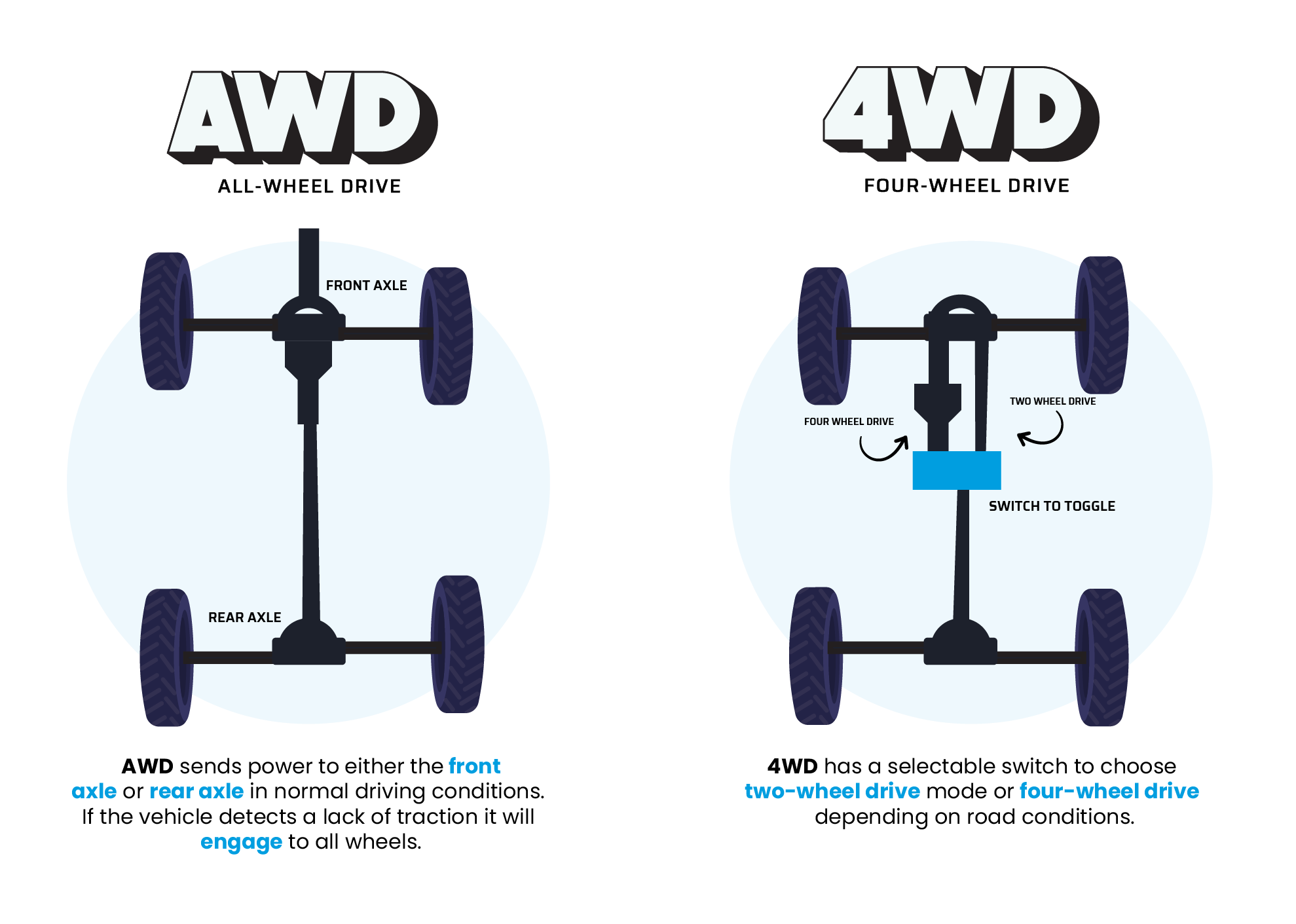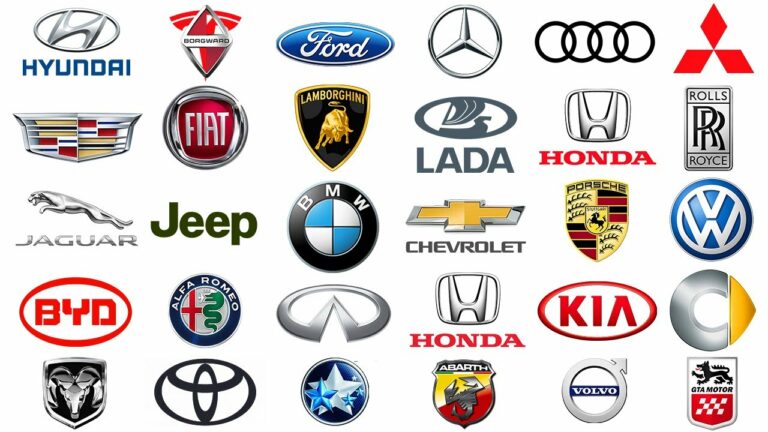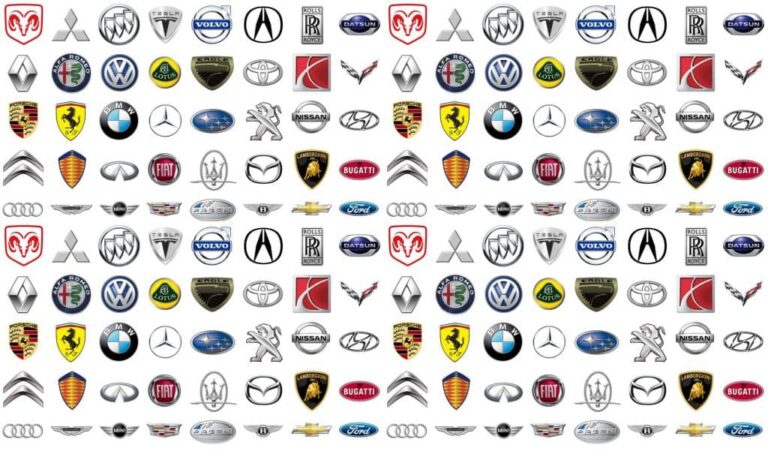The Enduring Legacy: Exploring the Land Rover Discovery and Defender 4-Wheel Drive Icons
The Enduring Legacy: Exploring the Land Rover Discovery and Defender 4-Wheel Drive Icons cars.truckstrend.com
In the vast landscape of automotive brands, few names evoke the spirit of adventure, rugged capability, and quintessential British engineering quite like Land Rover. At the heart of its legendary reputation lie two distinct yet equally iconic models: the Discovery and the Defender. While often grouped, they represent different facets of Land Rover’s commitment to four-wheel drive excellence, catering to a diverse range of adventurers, families, and professionals seeking unparalleled off-road prowess combined with varying degrees of luxury and practicality.
This article delves deep into the world of these two formidable 4WD vehicles, exploring their heritage, their evolution, their unique strengths, and the cutting-edge technologies that define them. Whether you’re an avid off-roader, a discerning family driver, or simply curious about these automotive legends, prepare to embark on a comprehensive journey through the Discovery and Defender.
The Enduring Legacy: Exploring the Land Rover Discovery and Defender 4-Wheel Drive Icons
The Land Rover Brand: A Preamble to Capability
Before dissecting the Discovery and Defender individually, it’s crucial to understand the brand that birthed them. Land Rover, founded in 1948 with the original Series I, was born out of a need for robust, go-anywhere utility vehicles for agriculture and military use. This foundational philosophy of extreme capability and durability has remained the bedrock of the brand for over seven decades.
From its humble beginnings, Land Rover evolved, introducing models that balanced utility with comfort and luxury. Yet, the core DNA of exceptional off-road performance, often powered by sophisticated four-wheel-drive systems, remained paramount. Today, Land Rover is synonymous with adventure, luxury, and the ability to traverse terrains others wouldn’t dare. The Discovery and Defender are shining examples of this enduring legacy.
The Defender: A Legend Reborn
The Land Rover Defender is arguably the most recognizable and revered off-road vehicle in history. Its silhouette is iconic, etched into the collective consciousness as the ultimate symbol of rugged exploration.
A. History and Original Intent (The Classic Defender)
The original Land Rover, later known as the Series I, II, and III, and eventually the Defender, was conceived as a utilitarian workhorse. It was simple, robust, and designed to conquer any landscape. From African savannas to Antarctic ice, the classic Defender earned its stripes as a global expedition vehicle, a military stalwart, and an indispensable tool for farmers and aid organizations alike. Its body-on-frame construction, live axles, and minimal electronics made it easy to repair in remote locations, fostering an incredible loyalty among its owners. Production of the original Defender ended in 2016, marking the end of an era.
B. The New Defender: Modern Capability Meets Heritage
In 2019, Land Rover unveiled the all-new Defender, a vehicle tasked with the monumental challenge of succeeding a legend. The new Defender retains the spirit and unmistakable presence of its predecessor but embraces modern engineering, technology, and comfort.
- Design and Variants: Available in 90 (three-door), 110 (five-door), and the recently introduced 130 (extended five-door with eight seats) body styles, the new Defender offers versatility. Its design is contemporary yet clearly pays homage to the original, with short overhangs, alpine light windows, and side-hinged tailgate.
- Engineering and Performance: Unlike the classic’s body-on-frame, the new Defender utilizes Land Rover’s advanced D7x monocoque architecture, making it incredibly strong and stiff. It offers a range of powerful Ingenium petrol and diesel engines, along with a plug-in hybrid (PHEV) option.
- Off-Road Prowess: Despite its modern underpinnings, the new Defender remains an off-road beast. It features permanent all-wheel drive, a two-speed transfer box, electronic air suspension (standard on most trims), configurable Terrain Response 2, and impressive approach, departure, and breakover angles. Its wading depth of up to 900mm (35.4 inches) is best-in-class.
- Technology and Comfort: Inside, the Defender is a sophisticated machine. It boasts Land Rover’s Pivi Pro infotainment system, digital instrument cluster, advanced driver-assistance systems (ADAS), and materials designed for durability and comfort. While rugged, it offers a level of refinement unimaginable in the classic.
C. Target Audience and Use Cases:
The Defender appeals to adventurers, off-road enthusiasts, and those who desire a robust, capable, and distinctly styled SUV. It’s perfect for overland expeditions, challenging trails, or simply making a statement while navigating urban jungles. Its modular interior also makes it highly practical for hauling gear or passengers.
The Discovery: The Versatile Adventurer
While the Defender represents raw, uncompromised capability, the Land Rover Discovery positions itself as the more versatile, family-friendly adventurer. It strikes a balance between formidable off-road ability and everyday comfort and practicality.
A. Introduction and Positioning:
Introduced in 1989, the Discovery was designed to bridge the gap between the utilitarian Defender and the luxurious Range Rover. It aimed to offer Land Rover’s renowned off-road capability in a package that was more comfortable, spacious, and appealing to families.
B. Evolution Through Generations:
The Discovery has evolved through five distinct generations, each building on the last to offer increased refinement, technology, and safety without sacrificing its core off-road DNA.
- Discovery 1 & 2 (1989-2004): Built on a ladder frame, these early models were rugged and immensely capable, quickly gaining popularity for their blend of utility and comfort.
- Discovery 3/LR3 & 4/LR4 (2004-2016): These generations introduced integrated body-frame architecture, independent air suspension, and the revolutionary Terrain Response system, setting new benchmarks for off-road sophistication and on-road comfort.
- Discovery 5 (2017-Present): The current generation moved to an all-aluminum unibody construction, significantly reducing weight and improving fuel efficiency and on-road dynamics. While its design was initially polarizing, its capabilities remain undisputed.
C. Key Features:
- Seating Capacity: A hallmark of the Discovery is its flexible seating. Most models offer true seven-seat capability, with comfortable third-row seating suitable for adults, unlike many competitors.
- Off-Road Technology: The Discovery inherits Land Rover’s full suite of off-road technologies, including permanent all-wheel drive, a two-speed transfer box, electronic air suspension, and the advanced Terrain Response 2 system. It offers excellent ground clearance, articulation, and wading depth (up to 900mm).
- Comfort and Luxury: The Discovery’s interior is more refined and luxurious than the Defender’s, featuring premium materials, advanced infotainment, and a focus on passenger comfort. Its spacious cabin and ample cargo volume make it ideal for long journeys.
- Towing Prowess: With impressive towing capacities (up to 8,200 lbs or 3,720 kg depending on engine/region), the Discovery is a favorite among those who tow boats, trailers, or caravans.
D. Target Audience and Use Cases:
The Discovery is perfect for families who need a spacious, versatile, and comfortable SUV that can handle daily commutes, long road trips, and challenging off-road adventures with equal aplomb. It’s the ideal choice for those who desire Land Rover’s capability but prioritize on-road refinement and passenger comfort.
Core 4WD Technologies and Features Across Both Models
Both the Discovery and the new Defender share a common pool of advanced 4WD technologies that underpin their formidable capabilities:
- Permanent All-Wheel Drive (AWD): Both vehicles feature full-time AWD systems that continuously send power to all four wheels, optimizing traction in all conditions.
- Two-Speed Transfer Box: This allows for selectable low-range gearing, crucial for conquering steep inclines, deep mud, or precise maneuvering at low speeds during off-roading.
- Electronic Air Suspension: This adaptive system provides variable ride height, allowing the vehicle to lower for easier entry/exit and higher speeds, and raise for increased ground clearance during off-road excursions. It also offers exceptional wheel articulation.
- Terrain Response System (and Terrain Response 2): Land Rover’s groundbreaking system optimizes the vehicle’s engine, gearbox, differentials, and chassis systems to suit various terrains (e.g., Grass/Gravel/Snow, Mud Ruts, Sand, Rock Crawl). Terrain Response 2 can automatically select the most appropriate mode.
- All-Terrain Progress Control (ATPC): A low-speed cruise control for off-road situations, allowing the driver to focus purely on steering while the system manages throttle and braking.
- ClearSight Ground View: A camera system that effectively makes the hood "invisible," allowing the driver to see the terrain directly in front of and under the vehicle – invaluable for navigating tricky obstacles.
- Wading Capability: Both models boast impressive maximum wading depths, enabling them to cross deep water obstacles with confidence. Integrated sensors can even provide real-time wading depth information.
- Robust Construction: While the new Defender is unibody, its D7x architecture is incredibly strong. The Discovery’s aluminum unibody is also immensely stiff and durable, designed to withstand the rigors of off-road driving.
Choosing Between Discovery and Defender
Deciding between a Discovery and a Defender boils down to your specific needs, priorities, and lifestyle.
- For the Utilitarian Adventurer (Defender): If your priority is uncompromised off-road capability, rugged durability, and a vehicle that looks and feels like it’s ready for anything, the Defender is your choice. It offers a more direct, purposeful driving experience, and its interior, while modern, leans more towards hard-wearing practicality. It’s the ultimate statement of adventure.
- For the Versatile Family Adventurer (Discovery): If you need a vehicle that excels in comfort, luxury, and passenger space for daily family duties, but can still tackle serious off-road trails on weekends, the Discovery is the better fit. Its refined ride, flexible seating, and ample cargo space make it an exceptional long-distance tourer and family hauler, without sacrificing genuine Land Rover capability.
Practical Advice:
- Test Drive Both: The best way to understand the nuanced differences is to drive both. Pay attention to ride comfort, steering feel, interior ergonomics, and visibility.
- Assess Your Needs: Be honest about how often you’ll truly engage in extreme off-roading versus daily commuting or family trips.
- Consider Trim Levels: Both models offer a wide range of trims, from basic to highly luxurious, significantly impacting features, price, and overall character. Research specific trims that align with your budget and desires.
- Aftermarket Support: Both have strong aftermarket support for modifications, though the Defender naturally leans more towards extreme off-road enhancements.
Maintenance, Modifications, and Ownership Experience
Owning a Land Rover Discovery or Defender is a unique experience. These are complex, sophisticated vehicles, and understanding their ownership aspects is key.
- Maintenance: Modern Land Rovers require diligent maintenance, often involving specialized tools and diagnostic equipment. Adhering to the manufacturer’s service schedule is crucial for longevity and performance. While parts can be more expensive than some mainstream brands, the investment ensures reliability.
- Modifications: Both models, especially the Defender, have extensive aftermarket support. Common modifications include lift kits, larger all-terrain tires, winches, roof racks, rock sliders, and expedition-grade recovery gear. These enhance capability for specific off-road challenges.
- Resale Value: Both models generally hold their value well, particularly the Defender due to its iconic status and demand. Well-maintained examples with complete service records command premium prices.
- Community: The Land Rover community is passionate and global. Owners often participate in off-road clubs, events, and forums, sharing knowledge, tips, and embarking on adventures together.
Pricing Guide: Land Rover Discovery and Defender (Current Models)
Prices for Land Rover vehicles can vary significantly based on region, specific trim level, optional features, and market conditions. The table below provides a representative starting Manufacturer’s Suggested Retail Price (MSRP) for the base models in the United States as of late 2023 / early 2024. These are for new vehicles and do not include destination charges, taxes, or dealer markups.
| Model | Body Style / Configuration | Starting MSRP (Approx. USD) | Key Features / Notes |
|---|---|---|---|
| Land Rover Defender | |||
| Defender 90 | 2-door, 5-seater | $56,400 | Compact and agile, ideal for urban navigation and tight trails. Iconic design. |
| Defender 110 | 4-door, 5/6/7-seater | $60,400 | The most popular variant, balancing practicality with capability. More interior space. |
| Defender 130 | Extended 4-door, 8-seater | $69,100 | Longest wheelbase, maximizing passenger and cargo capacity. Ideal for large families or extended expeditions. |
| Land Rover Discovery | |||
| Discovery | 4-door, 7-seater | $59,900 | Premium family SUV with exceptional off-road capability. Focus on comfort, space, and versatility. |
Important Considerations for Pricing:
- Trim Levels: Each model has multiple trim levels (e.g., S, SE, HSE, X, Carpathian Edition for Defender; S, R-Dynamic S, Metropolitan for Discovery), which can add tens of thousands to the starting price.
- Optional Packages: Land Rover offers extensive optional packages (e.g., Off-Road Pack, Cold Climate Pack, Advanced Tow Assist) and individual options that significantly increase the final price.
- Engine Choices: Different engine options (e.g., 4-cylinder, 6-cylinder, V8, PHEV) also impact pricing.
- Region: Prices vary significantly by country due to taxes, duties, and market demand.
- Used Market: The used market for both classic and new Defenders, as well as Discoverys, can fluctuate based on condition, mileage, and specific features.
Frequently Asked Questions (FAQ)
Q1: Are Land Rover Discovery and Defender reliable?
A1: Modern Land Rovers, including the Discovery and new Defender, have improved significantly in reliability compared to some older generations. However, they are complex vehicles with sophisticated electronics and air suspension systems that require diligent maintenance. Regular servicing by qualified technicians is key to ensuring their longevity and performance.
Q2: What’s the main difference between the Discovery and the Defender?
A2: The Defender (new generation) is engineered with a stronger emphasis on ruggedness, extreme off-road capability, and a more utilitarian aesthetic, while still offering modern comforts. The Discovery prioritizes family-friendliness, on-road refinement, luxurious comfort, and flexible seating (7-seater capability) while still maintaining exceptional off-road prowess.
Q3: Can I use a Discovery or Defender as a daily driver?
A3: Absolutely. The new Defender is much more refined and comfortable for daily driving than its classic predecessor. The Discovery, with its luxurious interior and smooth ride, is arguably even better suited for daily commutes and long road trips. Both offer excellent visibility and command a strong presence on the road.
Q4: Are Land Rovers expensive to maintain?
A4: Generally, yes, Land Rover maintenance costs can be higher than those of mainstream brands due to specialized parts, technology, and labor rates. However, this is commensurate with owning a premium, highly capable vehicle.
Q5: Which one is better for off-roading?
A5: Both are incredibly capable off-roaders. The Defender, especially in its more capable trims, is often considered the ultimate choice for extreme rock crawling or overland expeditions due to its geometry and design philosophy. The Discovery, however, is not far behind and can tackle very challenging terrain with ease, thanks to its sophisticated 4WD systems and air suspension.
Q6: What is the wading depth of these vehicles?
A6: Both the new Defender and the current Discovery boast an impressive maximum wading depth of 900mm (35.4 inches), making them highly capable in water crossings.
Concluding Summary
The Land Rover Discovery and Defender stand as enduring symbols of the brand’s unwavering commitment to four-wheel drive excellence. They represent a fascinating duality: the Defender, a resurrected icon that seamlessly blends its legendary ruggedness with cutting-edge technology, and the Discovery, a versatile adventurer that perfectly marries family-friendly practicality with genuine off-road prowess.
Choosing between them is a journey of self-discovery, reflecting your personal needs for adventure, comfort, and utility. Regardless of your choice, investing in a Land Rover Discovery or Defender means becoming part of a rich heritage, joining a global community of enthusiasts, and owning a vehicle that is truly built for the long haul, capable of taking you to the ends of the earth and back again. These vehicles are more than just modes of transport; they are passports to adventure, embodying the spirit of exploration that has defined Land Rover for over 75 years.







